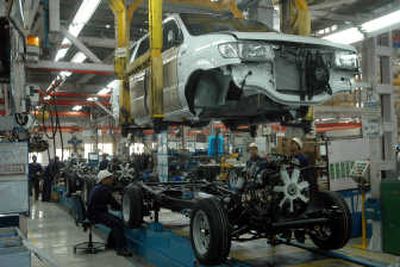Finally, there may be hope in Detroit

DETROIT — For a time, it looked as though Detroit’s three automakers could do no right, losing billions while cranking out inefficient trucks just as gas prices rose above $3 per gallon.
But recent quarterly profits by General Motors Corp. and Ford Motor Co. have given the Motor City a little hope that better days are ahead, even though both companies made most of their money overseas.
Of course, good news could be bad news in the auto industry, where companies are hashing out a new contract with its hourly workers.
On Tuesday, GM ran its string of profitable quarters to three when it announced second-quarter net income of $891 million.
Earnings growth in Europe, Latin America, Asia and other areas eclipsed lingering problems in North America. Although GM improved in its back yard, it still posted a net loss of $39 million there.
Last week Ford posted its first quarterly profit in two years at $750 million but warned that it hadn’t turned the corner to sustained profitability. Chrysler Group’s second-quarter earnings results have been delayed until August by the pending sale of 80.1 percent of the company to Cerberus Capital Management LP.
The second-quarter profits may be bad timing, coming on the heels of the formal start to contract talks with the United Auto Workers, although analysts say the companies can still point to losses in North America to show the need for concessions.
Several industry analysts said that while signs of trouble remain at both Ford and GM, the profits are still good news. At least for now, bankruptcy talk has subsided.
“I think it’s brightening up,” David Healy, an analyst with Burnham Securities, said of the clouds that had been hanging over Detroit.
“Both companies have shrunk about one-third of their hourly work force and they’ve closed a lot of plants. They’re basically adjusting to the level of business that they’re doing now.”
Peter Nesvold, an automotive analyst for Bear, Stearns & Co., said Detroit is starting to see the results of changes in product lineups due to higher gas prices and competition from Japanese automakers.
“I think that’s what the last two years have been about,” he said. “It’s been responding, albeit late, to the shift in consumer preference and the ongoing competitive threat from the new domestics.”